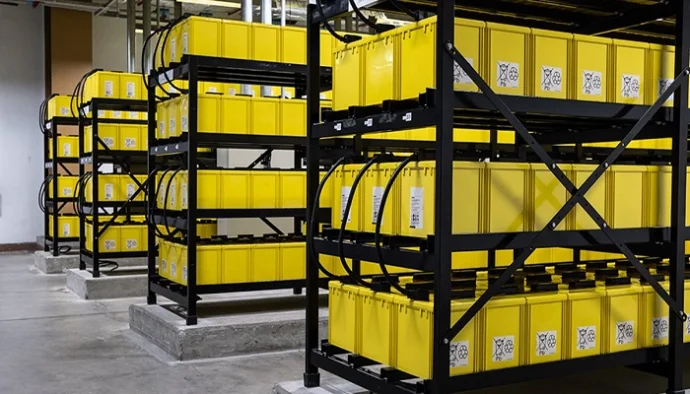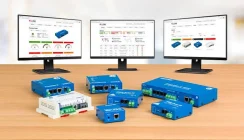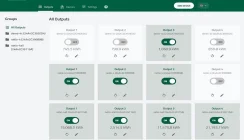How to Calculate UPS Battery Runtimes for Critical Loads
The power electronics circuits used within an uninterruptible power supply continue to evolve as UPS manufacturers develop their designs to be more energy efficient and compact. However, the overall size of a UPS system is limited by its battery pack and the amount of runtime that is required by the critical load when the mains power supply fails. How much runtime is required depends on the business continuity plan in place for any given organisation.
Business Continuity Planning
Business continuity planning can take many forms and revolves around deploying an overall business management system that can prevent and recover from threats to the operation of an organisation and its purpose. The goal of a business continuity plan is to continue operations at a specified level of service, both during and in the aftermath of a disaster.
A power outage and loss of electrical power is a legitimate business continuity concern. Momentary breaks in electrical supply networks are more common than realised. Power breaks can be caused by several factors including electrical distribution equipment failures on the National Grid, lighting strikes, storms, and even high winds. The only visible sign may be lights flickering or dimming as power grids recover to their nominal supply voltage and frequency.
Momentary (less than 10-20 millisecond) power breaks tend to cause little disruption to today’s IT servers. This is because the switch mode power supplies (SMPS) built-into are designed with built-in filters and ‘hold-up’ capacitance to protect from power surges and ride through momentary breaks in electrical supply.
Whilst hold-up time can provide some protection it cannot be relied upon as an ongoing solution. The amount of hold-up time is SMPS manufacturer specific and some systems may be more tolerant or sensitive than others. Exposing IT server power supplies to extreme conditions can lead to erratic operation, system hang-ups, wear and tear and early failure.
The widely accepted solution to provide protection from momentary or longer-term power failures is to install an uninterruptible power supply (UPS) and to use the UPS battery runtime to power on through a momentary power outage.
For more information on business continuity see: https://www.thebci.org/
What is UPS Battery Runtime?
UPS runtime is the estimated time that an uninterruptible power supply will run for without an AC (alternating current) input source (mains power supply or generator) for the amount of UPS load in VA or Watts connected to the output of the UPS. For example, 10minutes at 800VA or 800W.
When there is no AC input source, the UPS inverter section is powered from a DC (direct current) source. This DC source is most commonly a lead acid battery designed for standby applications. Lithium-ion batteries are offered by some UPS manufacturers as alternatives which may be more suitable for critical sites that are exposed to frequent power outages.
Lead acid battery technology is designed for standby applications. Lithium-ion batteries are designed for more frequent cycling of their power and are more commonly used in energy storage applications, electric vehicles, IT, and mobile technologies. Alternative DC power sources include Supercapacitors and DC flywheels, both of which can provide millisecond sources of power to a UPS inverter, but their capital costs can be high compared to mass produced lead acid UPS batteries.
How Much UPS Runtime Is Required?
The answer to this question is determined by several factors including how the organisation plans to operate during a power outage.
Smaller IT system operators may only require a short duration runtime of up to 10 minutes to provide sufficient time to power down their IT servers and networking devices in a safe and controlled manner. This type of approach is commonly adopted for smaller computer rooms and where the organisation does not have to continue to operate during a long duration mains power supply failure and the IT server(s) can be shutdown in a short space of time.
In this scenario, the UPS may be connected to the local Ethernet/IP network via an SNMP (simple network management protocol) card and UPS monitoring software installed. During normal conditions, the software can be used to monitor UPS performance. During a power outage, the UPS signals the monitoring software to broadcast a network alarm to users that the UPS is operating on battery. When the UPS approaches a pre-set battery discharge percentage, the monitoring software then initiates an orderly server shutdown.
Server room facilities may require running through a power outage, even one lasting several hours. It may be impossible to initiate a site-wide power down within a short space of time and/or the IT services provided are considered mission critical and must be kept running. For this scenario, a larger battery pack may be required and one that can run from 10-30minutes up to several hours.
The issue for long duration battery packs is one of size and cost and the alternative backup power solution for larger server rooms and datacentres is to install a standby power generator upstream of the uninterruptible power supply. The UPS is installed with a 10-30minute battery pack to allow for the start-up of the generator and any potential start-up problems. A properly maintained and serviced standby power generator should be up to full power within 30seconds to a minute of power-up being initiated. Generator start-up is automated and controlled by an automatic mains fail (AMF) panel. When the mains power supply is restored, the UPS system reverts to normal operation and the generator powers down. The typical runtime of a generator is related to its fuel tank size and load in kVA or kW. A typical day tank provides 8hours runtime and can be refuelled even during operation.
UPS Battery Sizing and Selection
UPS manufacturers and their resellers have a standard price list from which they can quote a specific UPS size and a range of battery runtimes. The battery runtimes quoted are based on several factors including the Ampere-hour (Ah) of the connected battery. The larger the load and runtime, the larger the battery set required.
Battery runtime calculations are non-linear and battery manufacturers and UPS suppliers used models and selector program when sizing UPS batteries (in Ah) for a specific load (VA/W) and runtime (minutes or hours) requirement. Factors for sizing UPS batteries include:
- Apparent and Real Power and Power Factor: Apparent power is measure in VA or kVA and Real power in Watts or kW. Real power is the energy required by the load to deliver its output (work) and is linked to Apparent power by the Power Factor (pf).
- Charger Size: UPS have a built-in charger and where this is not large enough for the Ah of a specific battery set, then additional chargers may have to be built into the installation to ensure a reasonable recharge time. It is important to remember that batteries self-discharge even when not connected to a charger.
- Inverter DC: this is the input voltage required by the inverter from the battery set. If the DC bus is 48Vdc then the UPS will require 4×12Vdc or 8×6Vdc batteries to make DC bus requirement
- UPS Inverter Efficiency: the more efficient the UPS inverter, the greater the energy passed to the load from the UPS battery. Energy losses must be added to the battery size.
- Battery Discharge Curves: battery performance is defined by a non-linear discharge curve that reflects the design and quality of materials used in the battery in terms of the electrolyte and thickness of the plates.
Quick UPS Battery Formulas
The following formulas provide quick, ‘rule-of-thumb’ numbers:
Battery Runtime Available Estimate
(10 x Battery Ah) / load Watts = runtime available (hours)
Battery Recharge Time
Battery Ah / Charging Current = recharge time (hours)
Battery Charger Sizing
(Ah / 12) less than or equal to the UPS charger size
The battery Ah should be no more than 12 times the maximum charging current. A 10A charger could be used for a battery set up to 120Ah
Number of Batteries Required Per Battery String
Inverter DC Bus / x = number of xVdc batteries required
Where ‘x’ is the number of the DC voltage of the proposed battery i.e. if the UPS DC Bus is 48Vdc, then 4 × 12Vdc batteries are required or 8 × 6Vdc batteries.
Summary
The amount of UPS battery runtime required will vary between applications, organisations and the requirements of their business continuity plans. Small computer rooms may only require 5-10 minutes of battery power to provide sufficient runtime to shut down their IT servers and networks in an orderly manner. For server rooms and datacentres with standby power generators, up to 30 minutes is the accepted norm to allow sufficient time for the generator to start. The generator will typically be sized to cover additional essential services on site including lighting and HVAC. Where a site has no local power generation, a larger UPS battery set may be required but this must be sized with a suitable battery charging to meet the needs of the battery and the recharge time required.


























